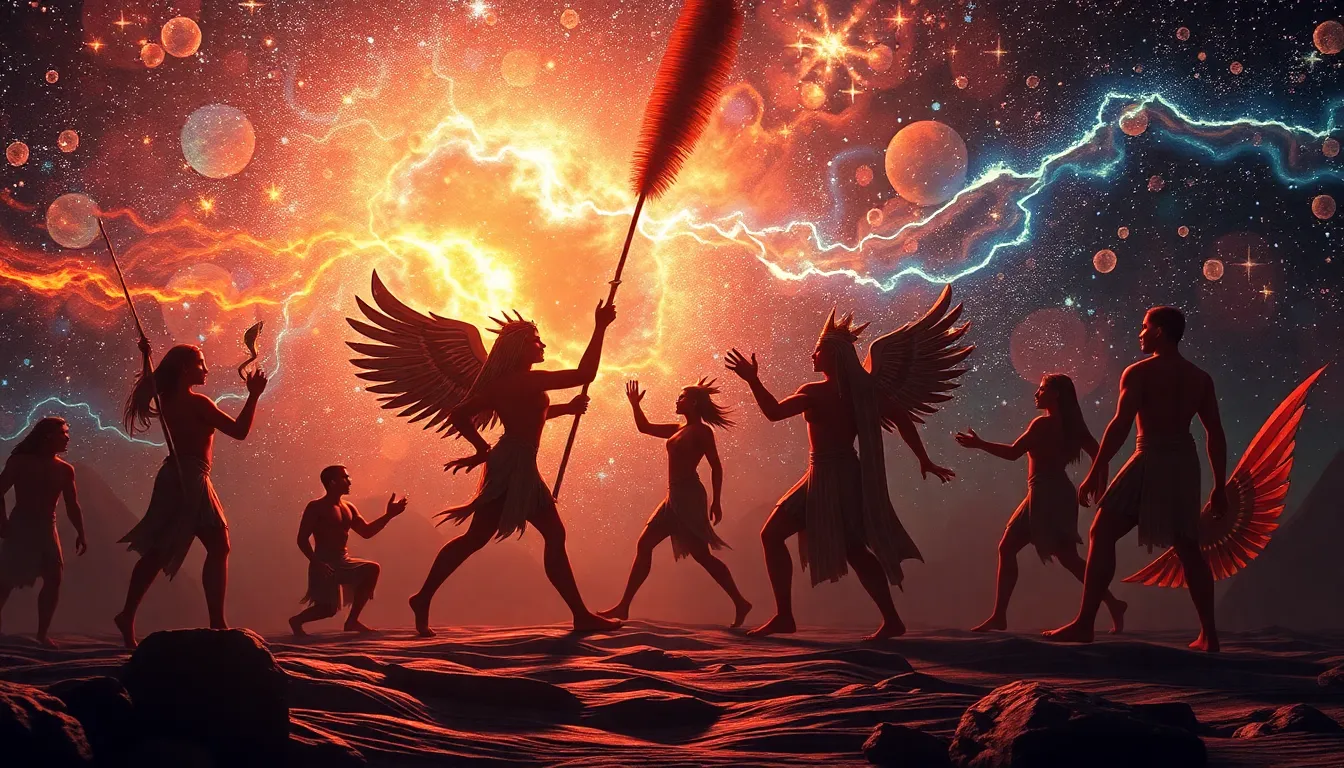The Cosmic Dance of Creation: Egyptian Myths and the Stars
I. Introduction to Egyptian Cosmology
Ancient Egyptian beliefs about the universe were deeply intertwined with their mythology, which provided a framework to understand the cosmos and humanity’s place within it. The Egyptians viewed the universe as a dynamic entity, governed by divine forces and celestial bodies that influenced life on Earth.
Mythology played a crucial role in shaping their understanding of creation and celestial phenomena. Through stories of gods and goddesses, the Egyptians explained the origins of the world, the cycles of the sun and moon, and the significance of stars and constellations in their daily lives.
II. The Role of Deities in Creation Myths
Central to Egyptian cosmology are several key deities, among them Atum, Ra, and Nut. Each of these gods held a significant position in creation myths, symbolizing different aspects of the universe.
- Atum: The creator god who emerged from the primordial waters of chaos, Atum was responsible for bringing forth the first deities and the world.
- Ra: The sun god, Ra represented light and creation. His daily journey across the sky symbolized the cycle of life and death.
- Nut: The sky goddess, Nut encompassed the heavens, her body representing the celestial dome that cradled the stars and planets.
The interplay between these gods illustrates how the Egyptians perceived the cosmos as a collaborative effort of divine beings, each contributing to the maintenance and order of the universe.
III. The Myth of Nut: The Sky Goddess
Nut, as the sky goddess, had a profound relationship with the stars. She was often depicted as a woman arched over the Earth, with her body adorned with stars, symbolizing the night sky. In Egyptian mythology, Nut was believed to swallow the sun each evening and give birth to it each morning, representing the eternal cycle of life.
The significance of Nut’s body as a celestial dome cannot be overstated. It served as a barrier between the chaotic waters of Nun and the ordered world of the living. The stars that adorned her form were thought to be the souls of the deceased, watching over the living and guiding them in the afterlife.
IV. The Creation of the World: The Heliopolitan Cosmogony
The Heliopolitan cosmogony explains the emergence of light from chaos. According to this myth, in the beginning, there was only Nun, the primordial waters. From these waters, Atum emerged, bringing forth the first light and the beginnings of creation.
Ra’s journey across the sky is a central theme in Egyptian creation myths. Each day, Ra would travel through the sky in his solar boat, illuminating the world and providing life. His descent into the underworld at night represented the cycle of death and rebirth, reinforcing the idea that creation is a continuous process.
V. The Symbolism of Stars and Constellations
In ancient Egypt, stars and constellations held great mythological significance. The Egyptians identified several constellations that were tied to their gods and myths. For example:
- Orion: Associated with Osiris, the god of the afterlife, Orion represented resurrection and the cycle of life.
- Sirius: Connected to Isis, the star Sirius marked the annual flooding of the Nile, which was crucial for agriculture.
- The Denderah Zodiac: A celestial map depicting various constellations and their associated deities, this zodiac illustrates the Egyptians’ understanding of the heavens.
The connection between stars and the afterlife was significant, as many believed that the souls of the deceased would transform into stars, thus becoming part of the cosmic order.
VI. The Ankh and the Cycle of Life
The ankh, a symbol resembling a cross with a loop at the top, represented life and cosmic balance. It was often held by deities in artwork, signifying their role as givers of life.
The relationship between creation, life, and the stars was encapsulated in the symbolism of the ankh. It represented not only physical life but also the eternal cycle of birth, death, and rebirth, mirroring the movements of celestial bodies.
VII. Astronomical Observations in Ancient Egypt
The ancient Egyptians were skilled astronomers who meticulously tracked celestial movements. They used these observations to create a calendar that was essential for agricultural practices, helping them predict the annual flooding of the Nile.
Astronomy held significant religious importance as well. Temples were often aligned with celestial events, such as solstices and equinoxes, and rituals were conducted to honor the gods associated with the stars and planets.
VIII. Conclusion: The Legacy of Egyptian Myths in Understanding the Universe
The legacy of Egyptian mythology continues to impact modern interpretations of the cosmos. The symbolic relationships between gods, stars, and the cycles of life provide a rich tapestry that illustrates the interconnectedness of culture, mythology, and the universe.
By studying these ancient beliefs, we gain insight into how the Egyptians made sense of the cosmos and their place within it, reflecting a timeless quest for understanding the mysteries of existence.




